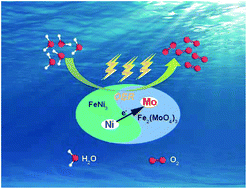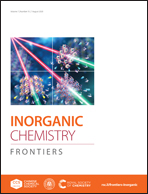Strong electronic coupled FeNi3/Fe2(MoO4)3 nanohybrids for enhancing the electrocatalytic activity for the oxygen evolution reaction†
Abstract
Electrocatalytic water splitting has been regarded as a feasible strategy for the production of clean hydrogen energy. However, the complex and slow oxygen evolution reaction (OER) process during operation greatly limits its application, thus the development of inexpensive and highly efficient electrocatalysts is of great importance. In this regard, a novel FeNi3/Fe2(MoO4)3 hybrid electrocatalyst is successfully synthesized via a facile hydrothermal reaction and subsequent calcination process. Benefiting from the strong electronic coupling interfaces between FeNi3 and Fe2(MoO4)3, the electron-withdrawing effect of Mo6+ could maintain active sites with a high-valence state from FeNi3, thereby contributing to a superior OER performance. Such a hybrid composite shows a low overpotential of 248 mV, achieving a current density of 10 mA cm−2 and satisfactory long-term stability. The superior catalytic activity outstrips most previous reports of non-precious metal electrocatalysts. This design of hybrid catalysts will open up a promising avenue for highly efficient electrocatalysts by exerting the synergistic advantages of interface engineering at the atomic level.



 Please wait while we load your content...
Please wait while we load your content...